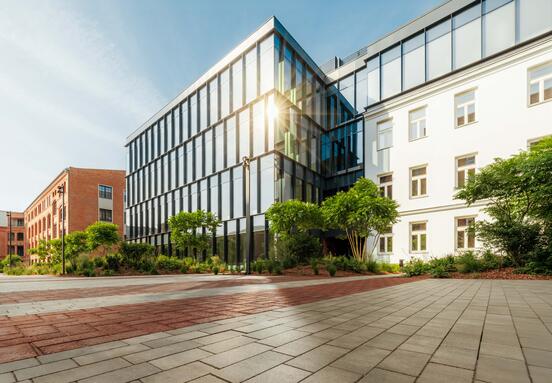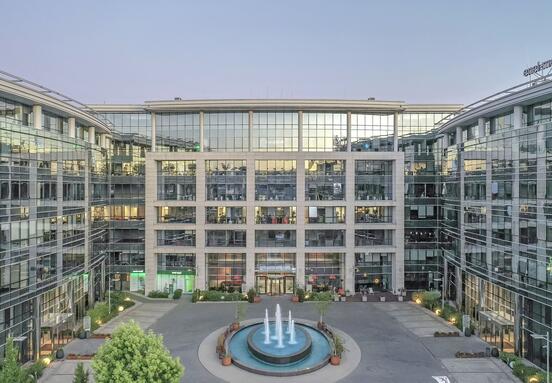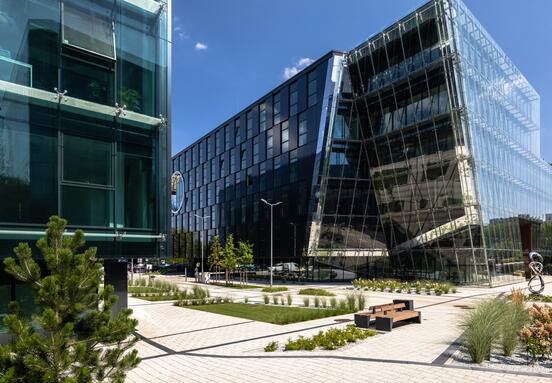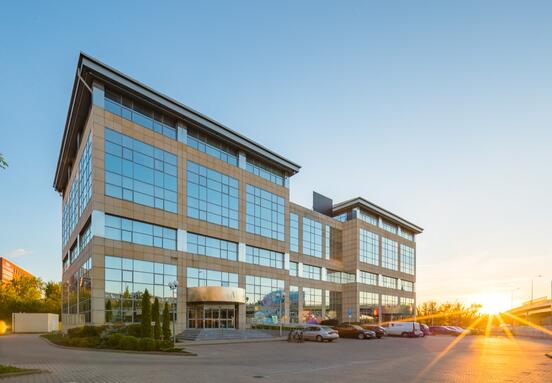The most important events in 2021 on the office market:
1. 12 million sq m offices
In 2021, the total supply in the nine major office markets in Poland exceeded 12 million sq m. The share of office space located on the main regional markets (Kraków, Wrocław, Tricity, Łódź, Poznań, Górnośląsko-Zagłębie Metropolia, Lublin and Szczecin) is almost equal to the total stock of modern office supply in Warsaw.
2. Redefinition of the work model and office functions
Due to the spread of remote work and the successive waves of the pandemic, the office function is evolving. Office space becomes, above all, a meeting place with colleagues and creative teamwork. The last two years, which forced a large part of companies to switch to remote or hybrid mode, allow to draw conclusions about the effectiveness of working from home, its advantages and disadvantages for the employee and the company, as well as to translate them into newly developed strategies for returning to the office - most often in hybrid model.
3. Flex surfaces provide a security cushion for businesses
Although the pandemic initially froze the expansion of flexible operators, the loosening of the restrictions made activity in this market return. According to the latest Colliers report entitled "Flexpansion 2021", flexible space in Warsaw currently accounts for 3.3 percent. total supply of office resources, which is the fifth result in the EMEA region. In 2022, further openings are planned in Warsaw and regional cities. More and more organizations regard the inclusion of flex space as an important tool for risk optimization and diversification of the real estate portfolio. This trend is noticed by the owners of office properties, who are starting to include flexible spaces in the list of necessary amenities in their buildings.
4. Stable investment activity
The CEE region continues to feel the impact of the COVID-19 situation on the transaction market activity, which is reflected in lower than historical transaction volumes. However, Poland maintains its position as the region's most attractive market thanks to its high liquidity and a wide range of high-quality investment products. Colliers experts estimate that more than half of the capital invested in the CEE region in 2021 went to Poland. In Warsaw and regional cities, office capitalization rates have remained stable since a slight correction in 2020.
5. The trend for mixed-use
There are more and more mixed-use projects on the commercial real estate market, in which the dominant office function is often supplemented with residential, commercial, service, entertainment and hotel elements. These types of investments are popular among tenants, also meeting the changing needs of employees who, after almost two years of the pandemic, began to appreciate the advantages of the "local lifestyle".
Forecasts for 2022 for the office market
1. Offices still needed
Despite the popularization of remote work, there will be no sudden revolution in terms of the demand for office space. The latest GUS study "Demand for work" shows that only 5% of Poles worked remotely in September 2021. In Warsaw, this percentage was the highest and amounted to 14%. The stable situation on the office rental market is also evidenced by a significant percentage of renegotiations (approx. 40-55 percent). Tenants decide to extend contracts and rearrange their space, allocating spaces for new functions. In the pandemic reality, the demand for services related to adapting the work environment (workplace strategy) is growing, allowing to diagnose the needs of employees in the new reality. At the same time, the relations between market participants are changing - in most locations we deal with the tenant market, which affects the growing packages of incentives. The strong position of tenants allows for shortening lease contracts, but on the other hand, growing fit-out costs translate into pressure to extend the lease period in order to obtain a turnkey office.
2. The growing role of ESG
The issues of ESG and sustainable development are becoming one of the stronger new trends in the real estate market, especially in the office market. This is evidenced by, inter alia, rapid increase in the supply of certified, "green buildings" and more and more modernization of existing office buildings. Environmental profit in implemented projects in the era of climate change becomes no less important than financial profit and ESG assumptions are increasingly important premises for business decisions. We can expect that in the coming quarters, more emphasis will be placed on real estate market participants to develop and implement individual ESG and sustainable development strategies.
3. Increase in the dynamics of investments in the office sector
The pace of investments and the inflow of capital should increase in the coming months. A number of large office asset investment deals - projects delivered in recent quarters - are now at an advanced stage and are expected to close in the coming year. The prices of top-class office assets in Warsaw are expected to increase, while the upward pressure in the prices of the best products in regional cities is expected.
4. Development of the idea of a 15-minute city
Office markets and real estate rental strategies in organizations will evolve to match the changing needs of office users. Among others, subscriptions for access to coworking networks with offices in various parts of the city or decentralized offices with satellite branches (hub and club model). The so-called "15 Minute Cities" with all your needs - work, shopping, study and entertainment - all in one neighborhood. The pandemic is accelerating the implementation of this concept.
5. Increase in costs and slowdown in developer activity
High inflation reflects the increase in costs also related to the office market, such as the prices of building materials, land, utilities and wages. Analysts' estimates indicate that the cost of building an office building has increased by as much as 30 percent since the beginning of the pandemic. Downtime in deliveries of construction materials from Asia and an increase in raw material prices, as well as the continuing uncertainty related to the activity of tenants due to the successive waves of the pandemic, limit the development plans of even the largest companies. This will result in a supply gap in Warsaw and some regional markets in 2023-2024.








